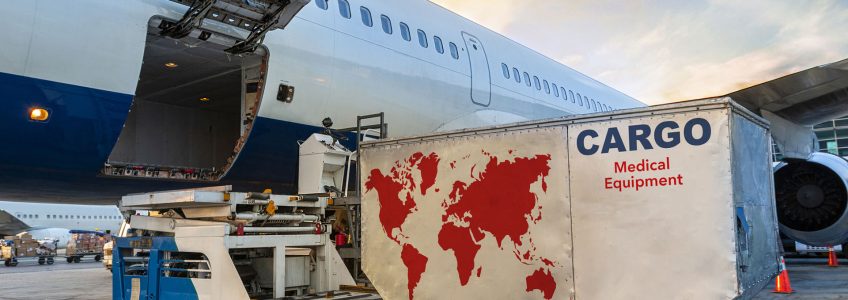
Air freight offers several advantages over other methods of shipment, including less handling and a lower possibility of freight damage. However, air freight also has its own shipping requirements. To help you take full advantage of all that air freight has to offer, we’ve put together some tips that will help you when it’s time to prepare your shipments. Following these simple guidelines and best practices will help ensure your package arrives at its destination safely and on time.
Choose the Right Air Freight Carrier
Not all airfreight providers are created equal. When selecting an airfreight partner, it’s important to consider factors like size and location of their warehouse if storage is needed, as well as their fundamental philosophy when it comes to customer service. Do they provide real-time tracking? Are they able to provide flexibility when it comes to billing? The answers to these questions can make a big difference in how smoothly your shipments go—so be sure to do your research beforehand.
Understand the Airport’s Shipping Capabilities
In order to get your shipment from point A to point B as quickly and efficiently as possible, you’ll need to have a good understanding of the capabilities of the airport involved. What types of aircraft do they use? What are the weight and dimensional limitations for packages being shipped? Knowing the answers to these questions will help you avoid any potential roadblocks and shipment delays
Know Your Commodity
When it comes to shipping via air freight, not all commodities are created equal—some are simply more suited for this method of transportation than others. If you’re unsure about whether or not your commodity can be shipped by air, consult with your provider—they should be able to give you guidance on whether or not it’s possible, as well as any potential risks involved.
Package Your Goods Properly
To ensure that your goods arrive at their destination in one piece, it’s important that they’re properly packaged—and this is especially true when it comes to shipping via airfreight. All packaging material should be new and free of any damage; if you’re reusing material, be sure that it’s still in good condition and up to the task at hand. In addition, all items should be properly cushioned so that they don’t shift during transit and possibly become damaged as a result.
Get Your Documentation in Order
Last but not least, don’t forget about the importance of documentation when shipping via airfreight. In addition to a commercial invoice listing the value of the goods being shipped, you’ll also need an Air Waybill—a document that acts as both a receipt for the goods being shipped and a contract between you and the carrier. Be sure that all paperwork is completed accurately and in full; if not, you may run into significant delivery delays.
Shipping by freight is a great option when time-sensitive freight needs to be at its destination quickly. Following the above best practices will definitely get you set for shipping success. Sometimes, though, it’s just easier to reach out to a freight solutions specialist to meet your immediate needs. The team of experts at Freight Services, Inc will work with you to develop a custom solution that meets the specific needs of your business while handling all the details of your shipments. Plus, their comprehensive solutions can save you time and money while giving you peace of mind knowing that your shipments are in good hands. Reach out to FSI today to learn more about how we can help your business succeed.
